Meet The New Red Pandas
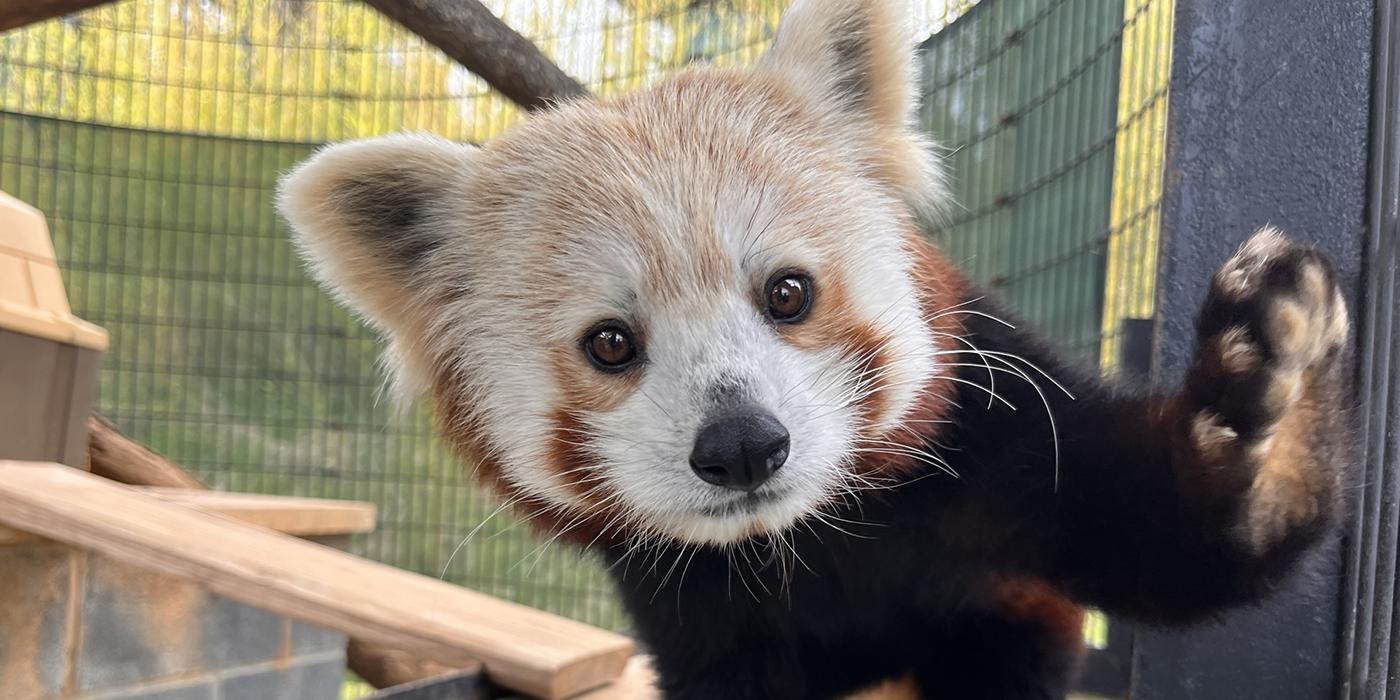
They’re sweet, outgoing and always in the mood for food. Meet Scarlet, Xena and Taizong, the Smithsonian’s National Zoo and Conservation Biology Institute’s new red pandas! The trio recently arrived at the Front Royal, Virginia, campus to breed and help conservation scientists better understand their health. Get to know our pandas’ personalities from animal keepers Jessica Kordell and Ish Ganame, and veterinarian Kristi Delaski.
What are your favorite facts about red pandas?
Ganame: When they get scared or surprised by something, they will stand up on their hind legs and put their forelegs up in the air to make themselves look big and ferocious. But, to humans, they just look adorable.
They also have something in common with squid! They are crepuscular—most active at dawn and dusk.
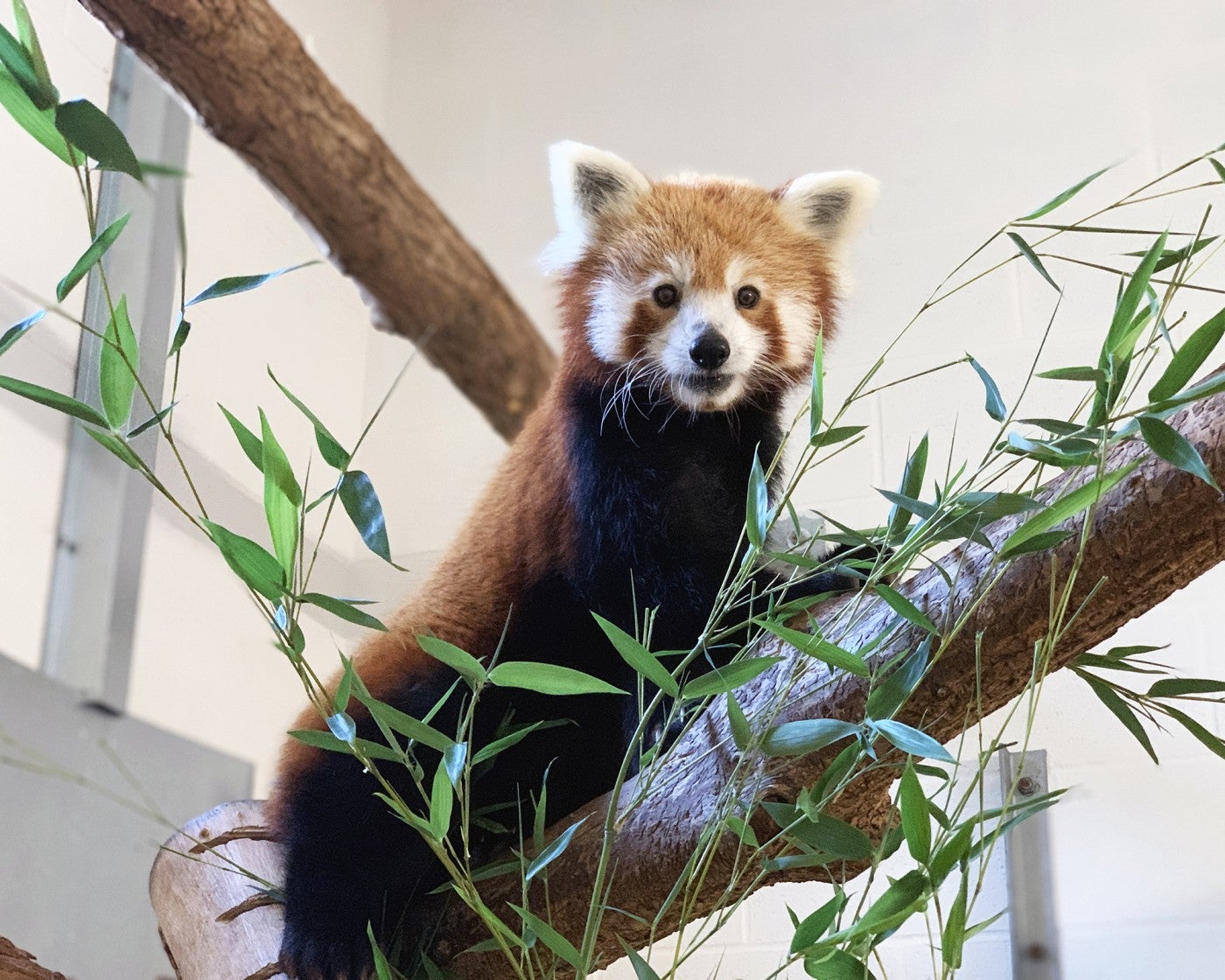
What are our red pandas’ personalities like?
Kordell: Scarlet, our 2-year-old female, is somewhat timid. When we paired her with our 1-year-old male, Taizong, she held her ground. She can be a little anxious sometimes. It has been interesting and fun to see their reactions to one another—and to us! Scarlet tends to be standoffish with me. But my favorite moments are when she approaches me.
Ganame: Scarlet is shy and gentle. She doesn’t interact with us right away, or chooses not to engage. She likes to stay up high on the perching logs in her habitat.
Kordell: Xena, our 3-year-old female, is tiny. But this little panda’s big, bold name suits her—she is feisty and outgoing!
Ganame: She is fearless—a lot like “Xena, Warrior Princess.” She does what she wants.
Ganame: Rocket, our 3-year-old male, was very friendly and gregarious before Xena arrived. Now, he is a bit more shy around her.
Kordell: Taizong is very sweet. He is also pretty outgoing, and very food motivated.
Ganame: He’s friendly, excited and hungry all the time.
Red panda Taizong forages for some tasty morsels of fruit inside a ball pit.
What is their favorite enrichment?
Ganame: Any enrichment item that has food in it is their favorite!
Kordell: Our red pandas eat bamboo, along with leafeater biscuits and various fruit treats like grapes, apples, pears and bananas. They all enjoy grapes, but they will also eat kiwi, which is unusual for red pandas! Interestingly, Scarlet never showed interest in it until Taizong came along. Now, she’ll eat it right away!
When we set up their enclosures, we put their regular diet items in different places to encourage them to explore, forage and play. With some enrichment toys, they have to spin, shake or roll them to get the food out. These puzzle feeders give the red pandas an opportunity to exercise their natural abilities and cognitive skills. Most have figured out how to get the food out of the feeders; Xena is still learning.
Scarlet seems to enjoy when we hide her food in a ball pit. She digs around and spills the balls everywhere. Taizong and Rocket both seem to enjoy Kong toys and cardboard boxes best. Rocket, especially, likes to sneak inside the boxes without opening them up all the way.
Ganame: When toys don’t have food, they are less interested.
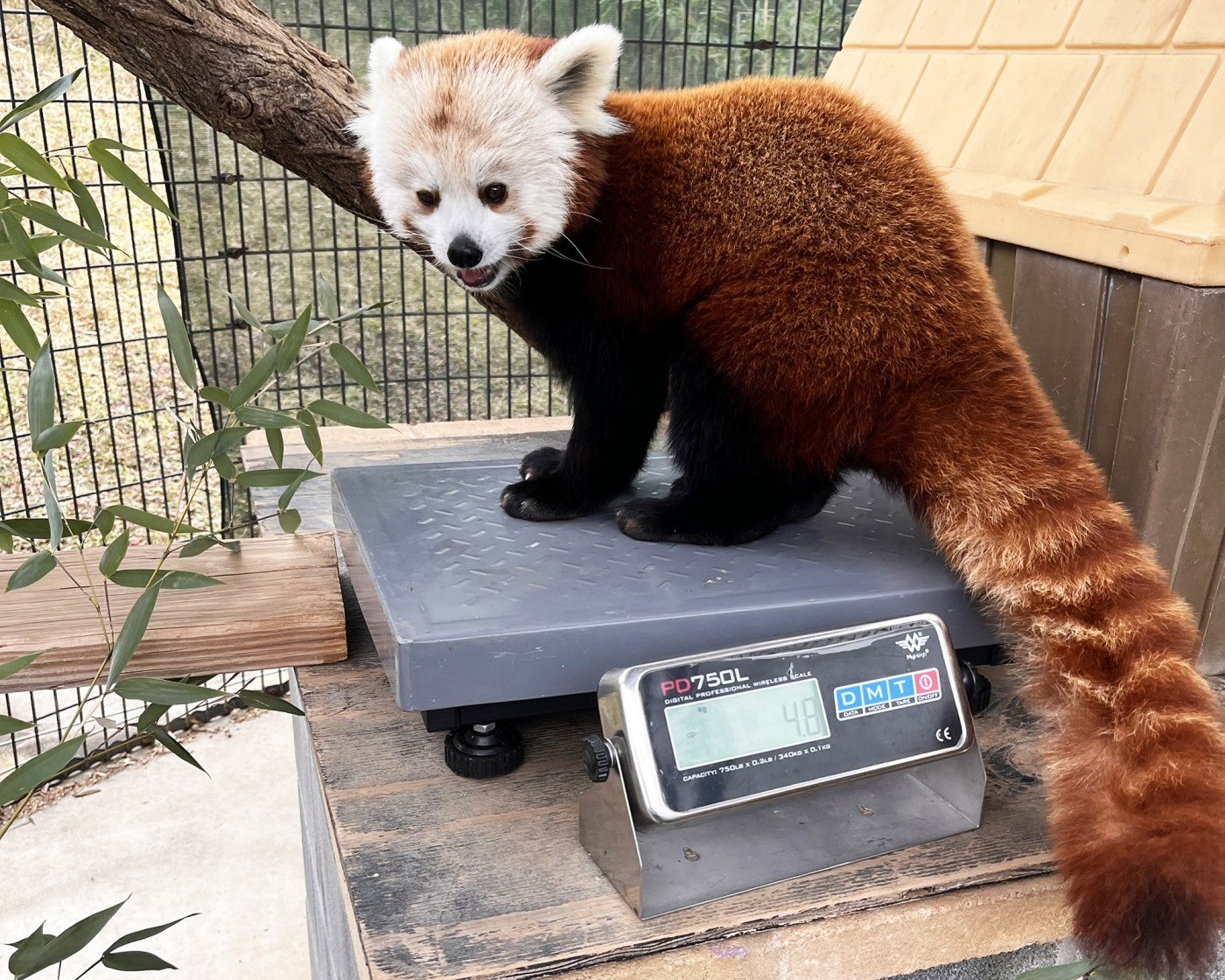
Do you train the red pandas?
Kordell: Our red pandas learn behaviors that help us take care of them on a daily basis. For example, we monitor their weights by asking them to climb on a scale. We desensitize them to our touch so that we can apply their flea and tick medication. And, they can shift (move) into a crate or from one enclosure to another on our cue. All of these behaviors are positively reinforced. They receive their favorite food—usually fruit—as a reward when they do the correct behavior. Once Scarlet and Xena have learned the basics, we will begin training them to participate in either ultrasounds or X-Rays so that we can confirm and monitor their pregnancies.
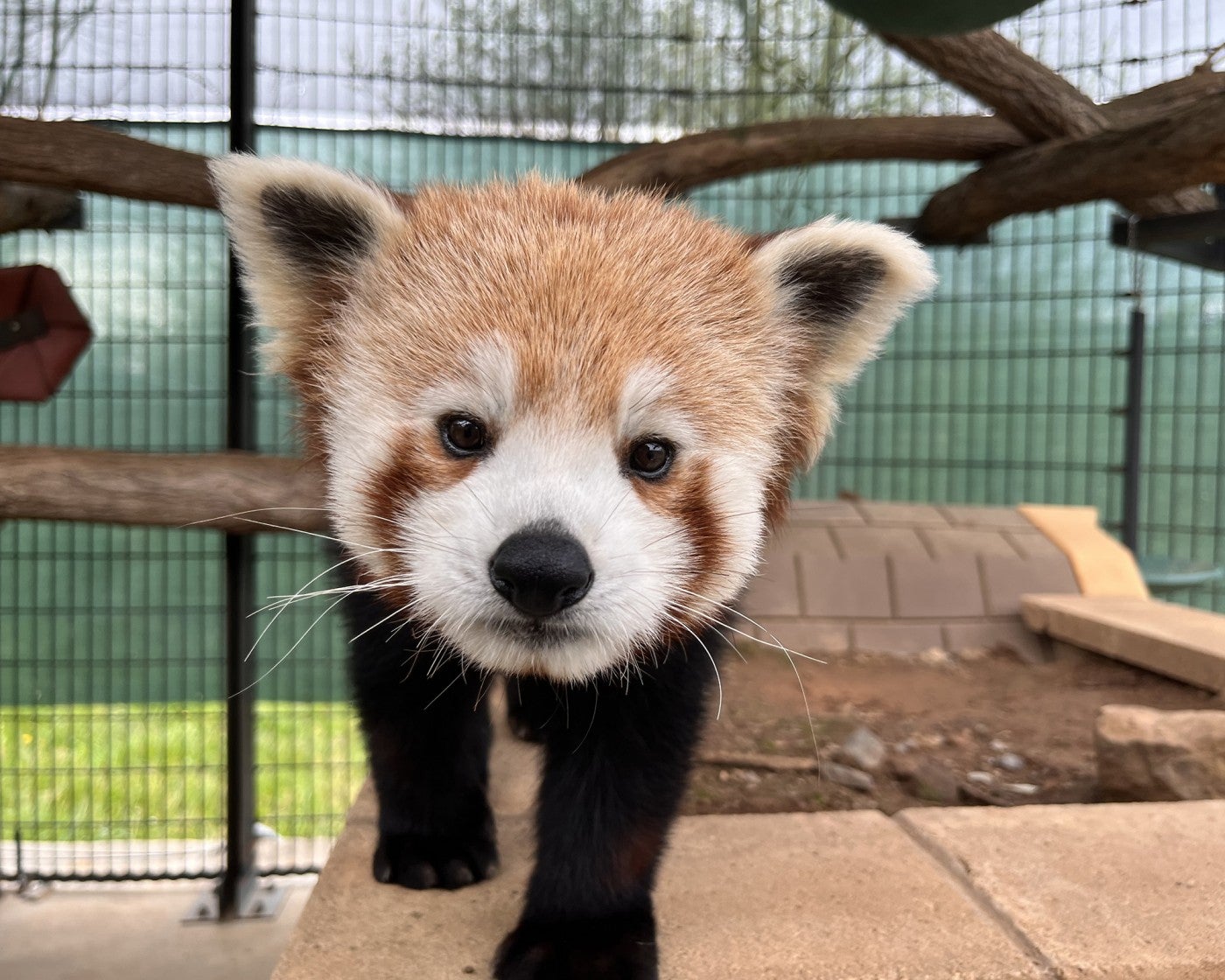
Why did they come to SCBI?
Kordell: Scarlet and Taizong came here to breed with each other, and Xena received a recommendation to breed with Rocket.
Delaski: Most red pandas in accredited zoos in North America participate in the Species Survival Plan (SSP) for red pandas. The SSP scientists match red pandas by looking at their genetics to ensure a pair’s offspring are as genetically diverse as possible. They also consider the animals’ health, temperament and other factors to determine how successful a pairing may be.
How do you know when red pandas are ready to breed?
Kordell: In the wild, red pandas are normally a solitary species, the exception being a female with cubs. Sisters and related females will stay near each other. Occasionally, males’ territories will overlap with the females’. Luckily for us in the zoo community, they live well in pairs. Before we put them in the same enclosure, we give them “howdy” access where they can see, smell and interact with each other through a protective barrier before meeting face-to-face.
We watch their behaviors closely for signs that they are ready to mate. During breeding season, both males and females will scent mark more than usual, and the males will vocalize—they twitter and squeal! Typically, we also see the male following the female around. Sometimes, she will show that she’s interested by following him, too, and present herself by backing up to him.
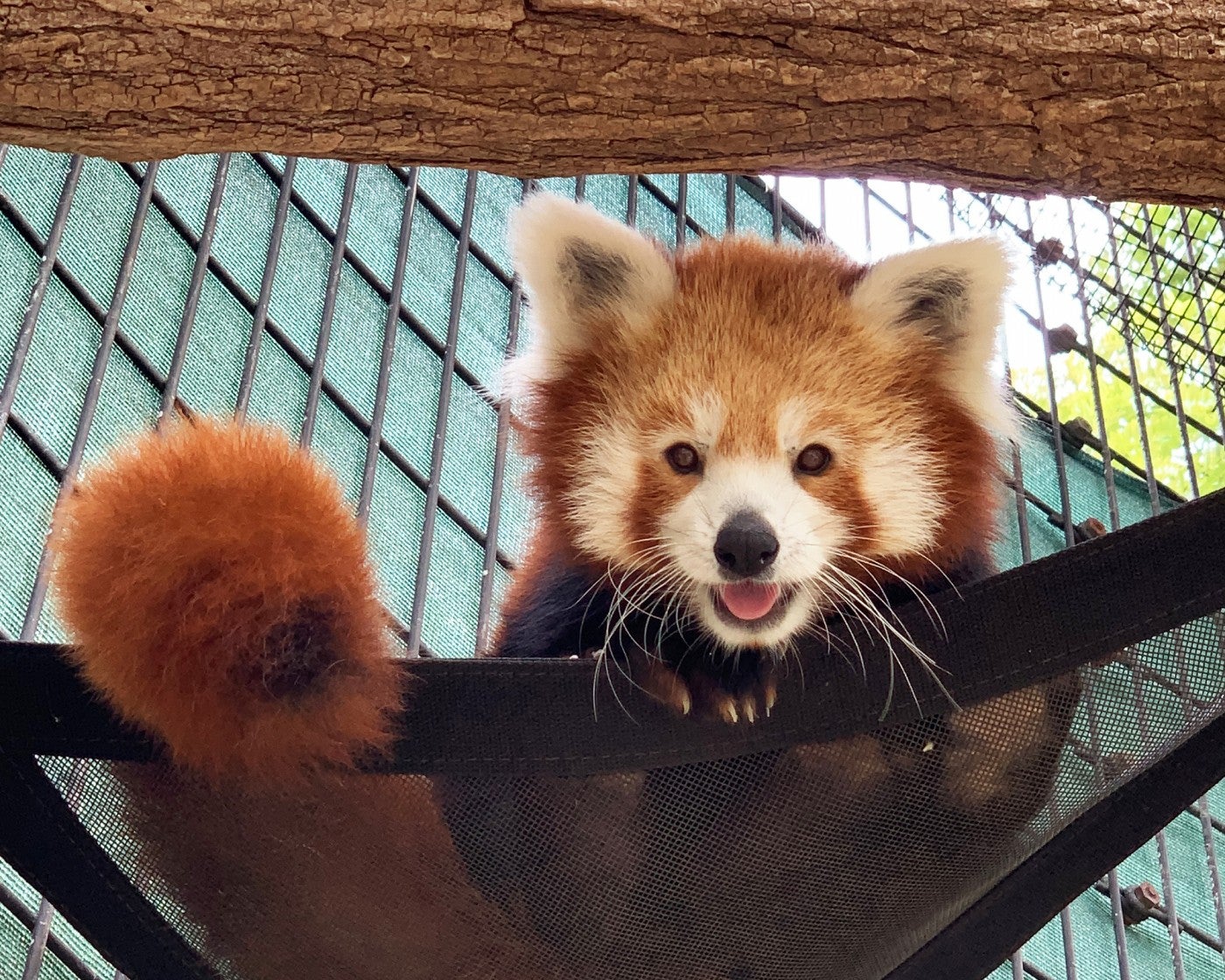
How long is a red panda’s gestation?
Delaski: That’s somewhat of a mystery! We know that they generally breed between January and March and typically give birth between May and July.
We strongly suspect that red pandas experience “delayed implantation,” which means that after they breed, the embryo floats around in the uterus and doesn’t start developing until it sticks to the uterine lining. Once conditions are right, the embryo will implant, and that’s when true gestation starts. Over the years, I’ve noticed that if a red panda gives birth the second week of June, they will almost always give birth the second week of June.
Have you learned anything new or different about red pandas here at SCBI?
Delaski: We have several red panda health research projects in the works. The first looks at their gut microbiome. They are an interesting animal because although they eat mostly bamboo, they have the digestive system of a carnivore. We’re studying how the type of bacteria found in their gut changes depending on the season, their activity levels and the level of stress hormones in their fecal samples. We’re also interested in seeing what (if any) effect a panda’s personality has on their microbiome. For example, we’re comparing Scarlet (who is more timid) and Xena (who is more bold) and looking at the differences in their microbiomes over time.
We want to better understand the bacteria in their gastrointestinal tract and learn what causes mucous stools—feces that has a consistency similar to mucous instead of a fully formed stool. When red pandas experience mucous stools, they can also display symptoms such as abdominal discomfort, nausea, sleeping more than usual, trouble defecating and decreased appetite. Once they pass them, though, they return to their normal behaviors.
Another health issue that red pandas are prone to is cardiac disease. It especially affects adult and geriatric red pandas. During their routine exams, we collect blood samples that enable us to evaluate their overall health. For this particular project, we are looking though historical records of red pandas who died with and without cardiac disease. Then, we compare their blood samples and look for a protein within the heart muscles that is increased with damage to the heart. If we are able to find elevations in this marker earlier, we may be able to diagnose and treat cardiac disease in red pandas while they are young and extend their longevity.
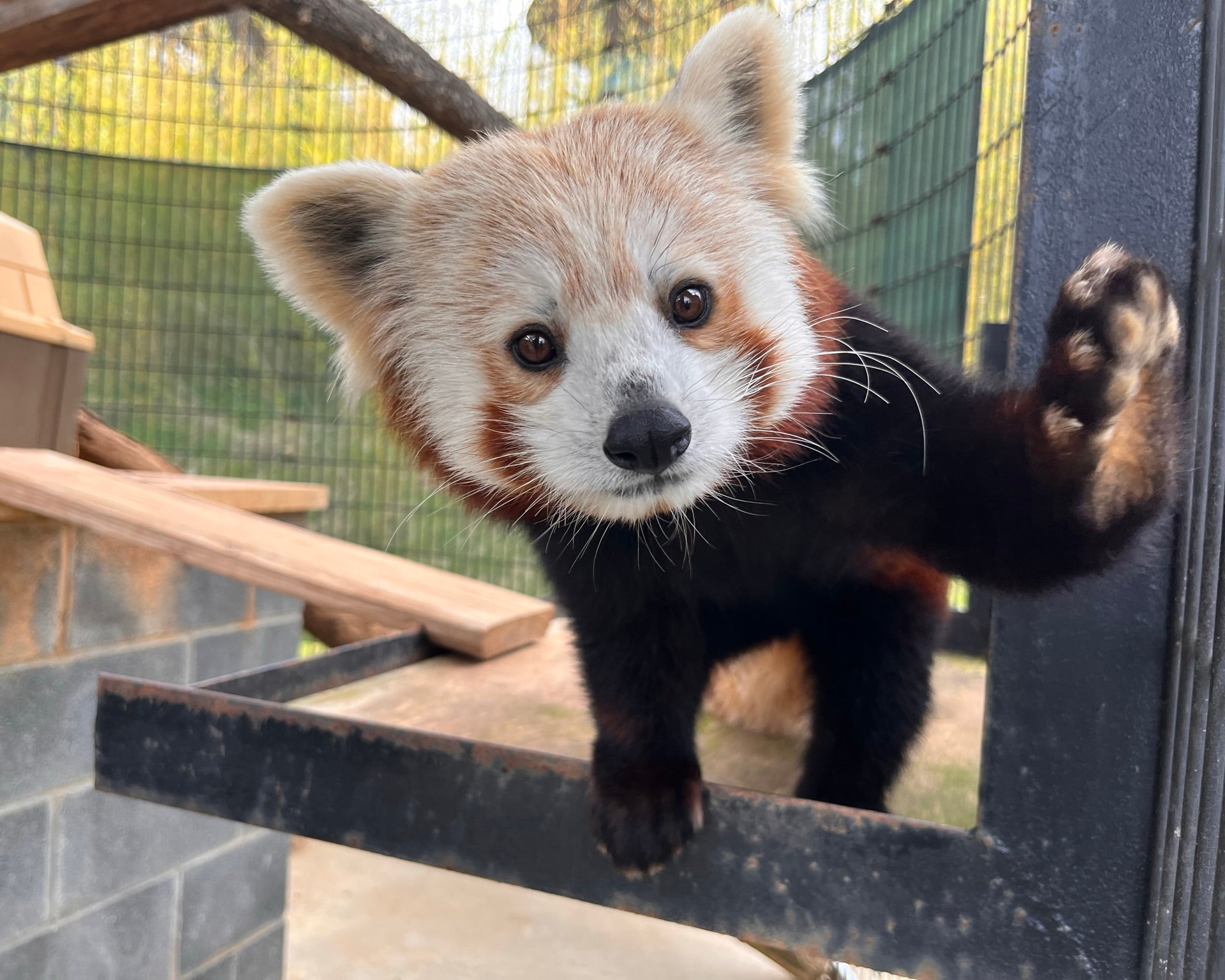
What role do red pandas play in their native ecosystem?
Ganame: The word “panda” means “bamboo eater” in Nepali. True to that name, they keep the bamboo growth in their native habitat in check!
Kordell: Red pandas are reliant on dense, old forests to thrive. They are an important indicator species for environmental changes in Nepal, China and India.
Ganame: Climate change is a big challenge for red pandas. As the temperature gets hotter, they must move up the mountain to where the air is cooler in order to find relief from the heat. They do shed some of their fluffy winter undercoat in spring and summer, but they all have trouble with temperatures over 75 degrees.
Delaski: They are also an indicator species for biodiversity. So, when the red panda starts disappearing, other species in that habitat are also negatively affected.
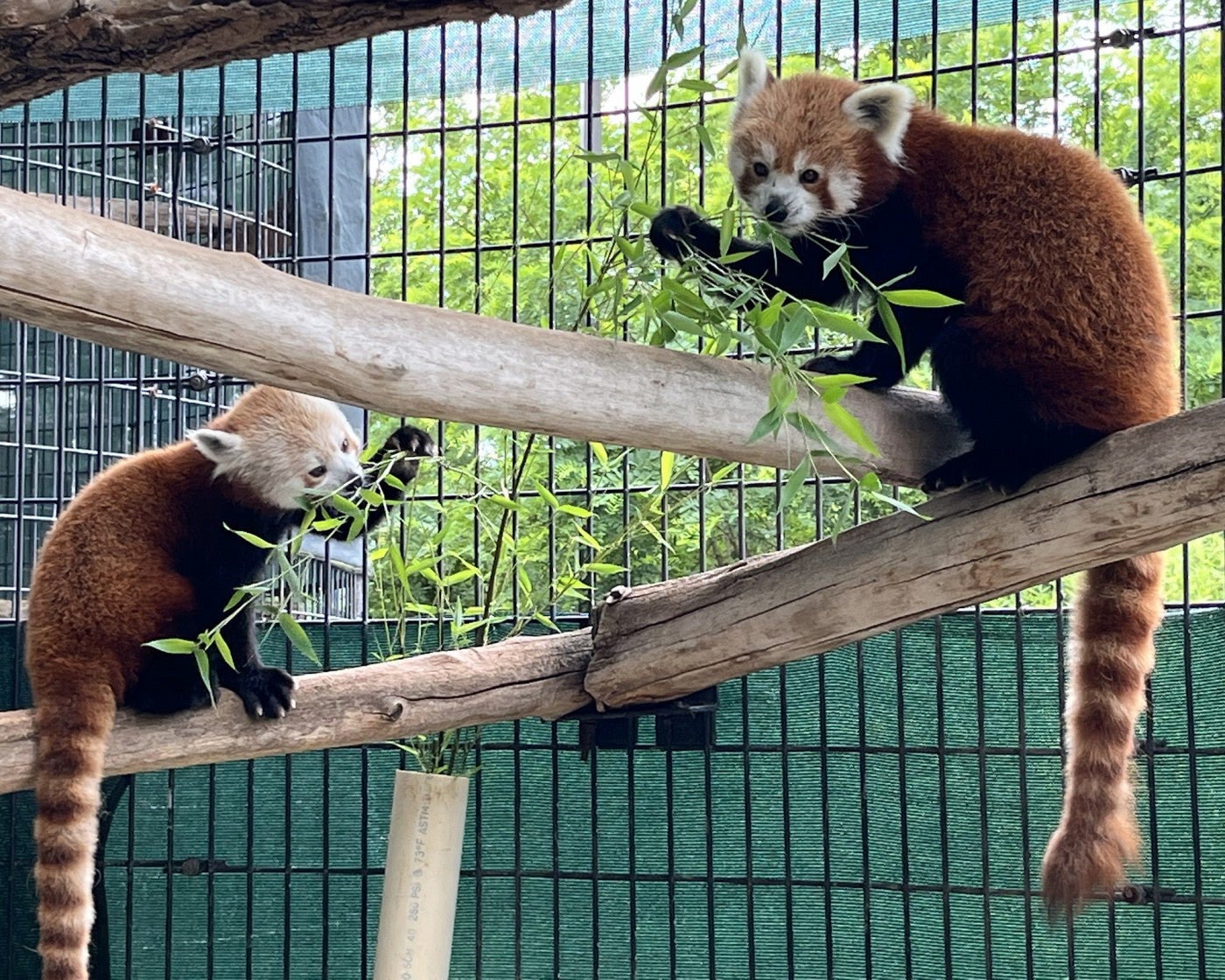
I want to help save red pandas! What can I do?
Ganame: Fossil fuels are fueling climate change. Cutting down on fossil fuel usage would be a big help to red pandas. And, it’s always a good idea to reduce, reuse, recycle!
Delaski: Poaching for the illegal pet trade is another reason that wild red panda populations have declined. They make terrible pets—they are not cuddly, they are stinky, they bite and scratch, and for such a small animal, they are really strong. Just spreading the word that they don’t make good pets is important.
Kordell: Support organizations and zoos that care for red pandas and contribute to their conservation—like ours! Since we don’t know much about red pandas, the research that the zoo community is doing to better understand their breeding, behavior and ecology helps not only the pandas in human care, but can also help us better understand what they need to thrive in the wild.
This story was featured in the July 2022 issue of National Zoo News. Want to see red pandas at the Zoo in Washington, D.C.? Meet Asia Trail’s red pandas, Asa and Chris-Anne!
Related Species:

